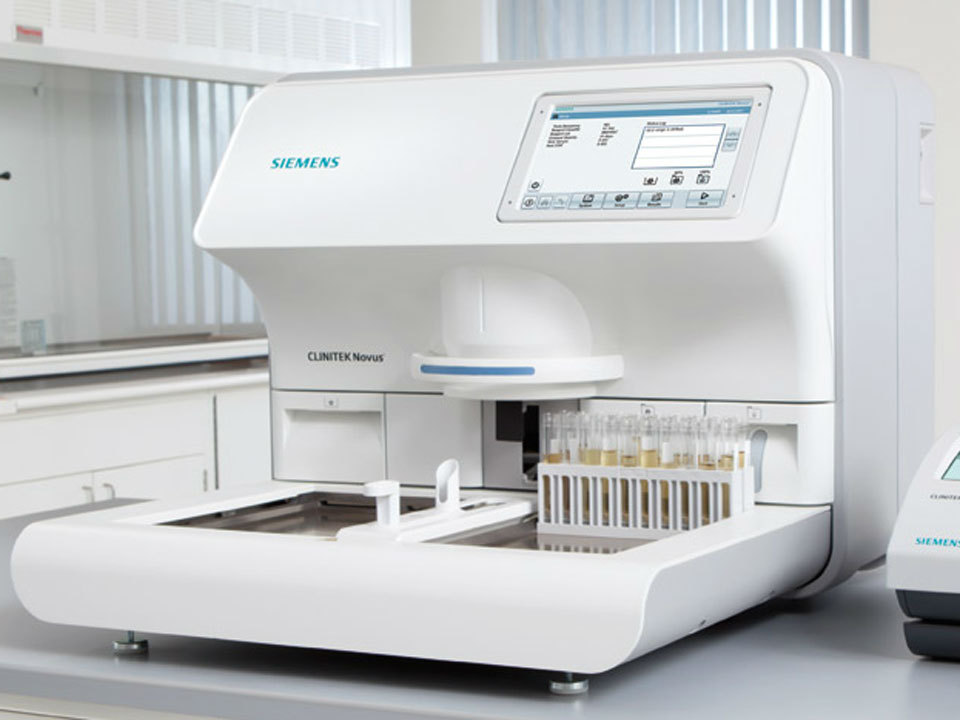Most people have a urine test at least several times in their lifetime. A urine test is intended to detect specific diseases, sometimes as a routine test during a physical examination.
1. Characteristics
Urine tests help detect diseases related to the excretory system as well as metabolic diseases (such as obesity and liver disease).

2. Operating principle of machine:
Urine test by colorimetric method.
- Bilirubin: Test based on the coupling between bilirubin and Diazonium salt stabilized in a strong acid environment.
- Urobilinogen: test based on the coupling between Urobilinogen and Diazonium salt stabilized.
- Ketone: Acetoacetic Acid and Acetone react with Sodium Nitropusside in an alkaline solution to form a purple complex (Legal test).
- Ascorbic acid: Tillmann test method for discoloration.
- Glucose: Test based on Glucose Oxidase / Peroxidase reaction specific to Glucose. The reagent only reacts with Glucose and not other sugars.
- Protein: The test is based on the same activity as Peroxidase of Hemoglobin and Myoglobin which catalyzes the oxidation of the indicator under the presence of organic Peroxide on the test strip.
- pH: tested based on the principle of a dual indicator and produced a range of colors from orange to yellow and blue to made and allowed to distinguish pH from 5 to 9.
- Nitrite: test based on Griess reaction.
- Leukocyte: Leukocyte leukocyte Esterase, heterocyclic Carboxylate on test strip
- Specific Gravity: test based on change of reagent color from blue-green to green-yellow or brown, depending on the concentration of ionic components in urine.
3. Benefits
Urine test to:
- Screen for disease or urinary tract infection. Symptoms of a UTI may include: colored urine, odor, pain during urination, difficulty urinating, hip pain, hematuria or fever.
- Control in the treatment of diabetes mellitus, urolithiasis, urinary tract infection, high blood pressure or some kidney and liver diseases.
- Routine physical examination.
